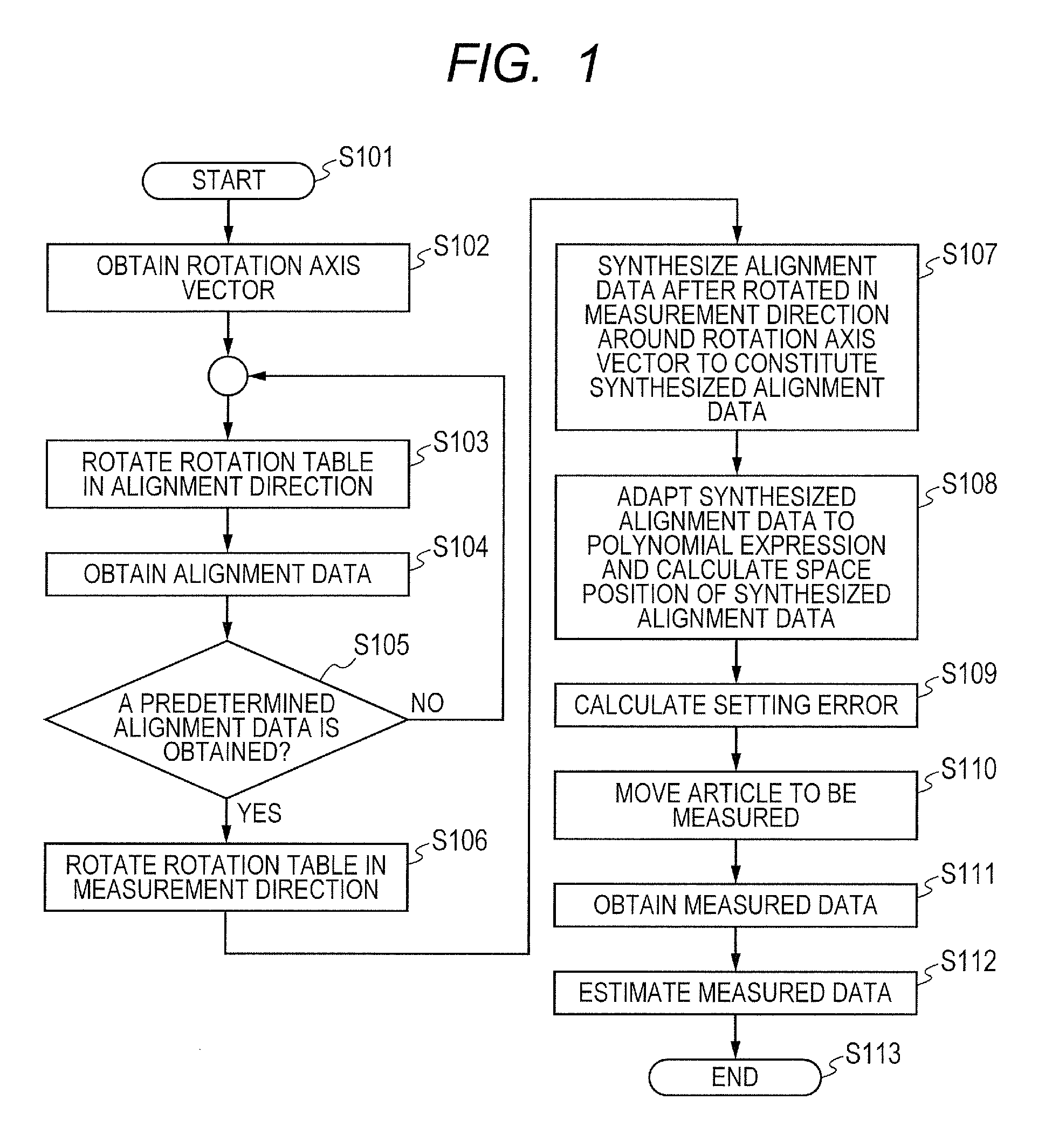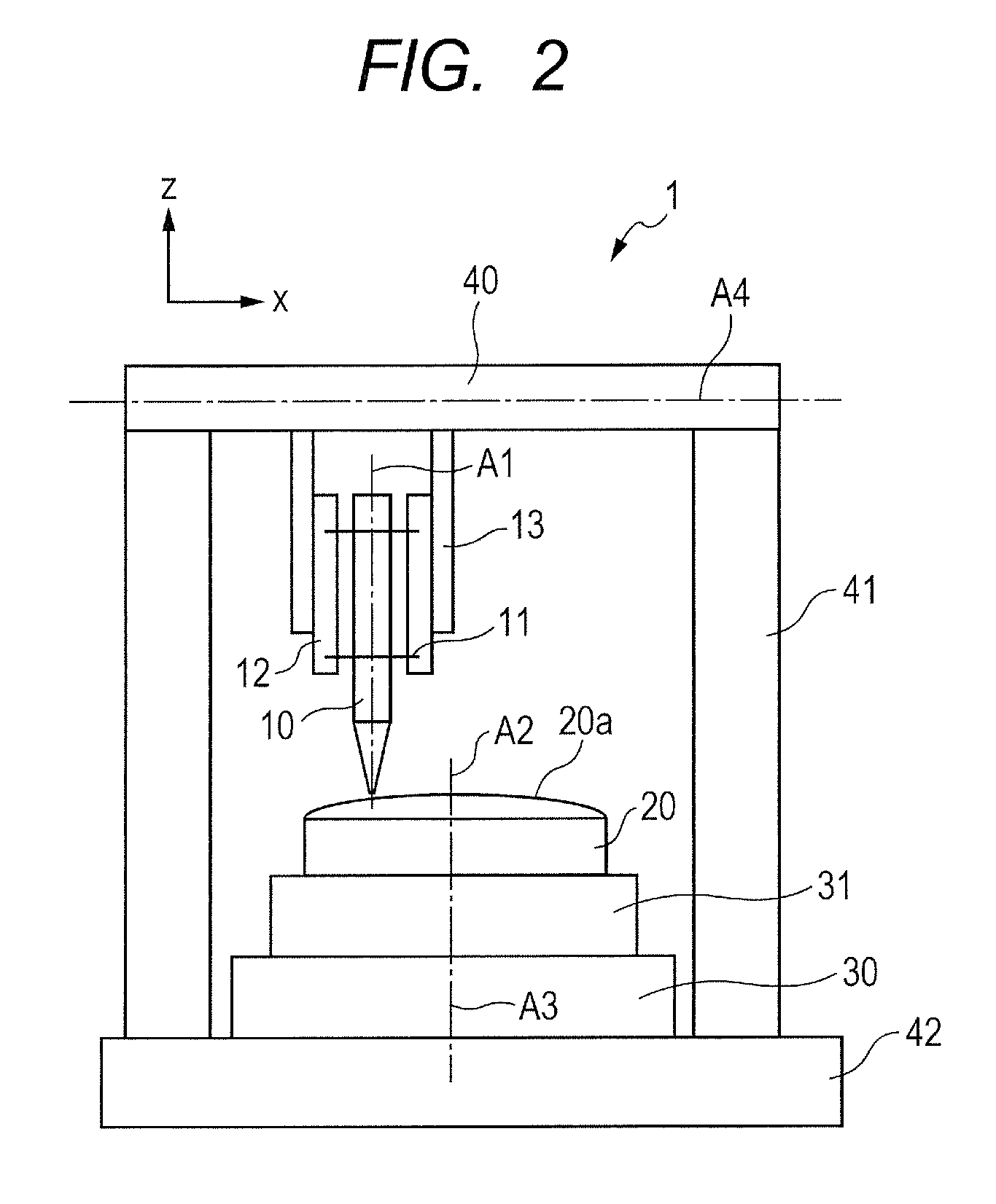Contour shape measurement method
a measurement method and contour technology, applied in the direction of mechanical measuring arrangements, optical apparatus testing, instruments, etc., can solve the problems of measurement error, incorrect recognition of the shape of the surface as being different from the design shape, and inability to correctly recognize the shape of the surface, etc., to reduce the setting error
- Summary
- Abstract
- Description
- Claims
- Application Information
AI Technical Summary
Benefits of technology
Problems solved by technology
Method used
Image
Examples
Embodiment Construction
[0024]Preferred embodiments of the present invention will now be described in detail in accordance with the accompanying drawings.
[0025]FIG. 1 is a flowchart of a contour shape measurement method according to Embodiment 1 of the present invention. FIG. 2 is a diagram of a probe-type shape measurement device according to Embodiment 1 of the present invention.
[0026]A structure of a probe-type shape measurement device 1 according to Embodiment 1 of the present invention is described first, with reference to FIG. 2.
[0027]A probe 10 used for scanning along a surface 20a to be measured of an article 20 to be measured is supported by a housing 12 via flat springs 11. Two flat springs 11 are attached in parallel. By being attached in this way, the flat springs 11 function as a linear guide for moving the probe 10 in a uniaxial direction with respect to the housing 12.
[0028]The flat springs 11 also function as a spring element for generating a force according to the relative position of the ...
PUM
| Property | Measurement | Unit |
|---|---|---|
| rotation table | aaaaa | aaaaa |
| rotation angle | aaaaa | aaaaa |
| rotation axis | aaaaa | aaaaa |
Abstract
Description
Claims
Application Information
 Login to View More
Login to View More - R&D
- Intellectual Property
- Life Sciences
- Materials
- Tech Scout
- Unparalleled Data Quality
- Higher Quality Content
- 60% Fewer Hallucinations
Browse by: Latest US Patents, China's latest patents, Technical Efficacy Thesaurus, Application Domain, Technology Topic, Popular Technical Reports.
© 2025 PatSnap. All rights reserved.Legal|Privacy policy|Modern Slavery Act Transparency Statement|Sitemap|About US| Contact US: help@patsnap.com



